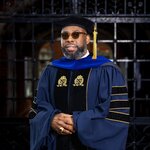By Kelcy G.L. Steele, Ph.D, M.Div
I am a proud pastor in the African Methodist Episcopal Zion Church and love the concept of holy conferencing when we meet yearly at annual conferences to give an account of our stewardship. Holy conferencing is a sacred practice in the church that allows pastors and church leaders to come together to share their experiences, discuss important matters, and make decisions that impact the congregation and the community. It serves as a platform for accountability, unity, and spiritual growth, fostering a sense of collective responsibility and ensuring that the church operates in alignment with its values and mission. A part of this grand tradition is one of the most important reports that can ever be made besides the episcopal address called The State of the Church Report. During holy conferencing, pastors and church leaders often discuss matters such as the allocation of resources and budget planning, implementation of outreach programs, strategies for community engagement, and the evaluation of ongoing ministries. Additionally, topics like pastoral appointments, leadership development, and spiritual formation also feature prominently in these gatherings, ensuring that the church remains vibrant and connected to its members’ needs. I have found in my travels that many approach this report with opinions and general observations rather than with research and fact-based analysis. In order to assist the chair of the committee in framing the reality of the black church, I conducted research on the subject.
Abstract:
The Black Church, a cornerstone of African American life for centuries, stands at a crossroads. This report examines the current state of this vital institution, exploring its enduring strengths, ongoing transformations, and the emerging challenges it faces in the 21st century. Through analyzing demographic shifts, theological adaptations, sociopolitical engagement, and economic realities, this report provides a nuanced understanding of the Black Church’s evolving role within both the African American community and the broader American landscape.
Introduction:
Born out of the crucible of slavery, the Black Church has long served as a bedrock of spiritual sustenance, social activism, and cultural preservation for African Americans. More than just a place of worship, it has historically functioned as a sanctuary from oppression, a platform for social change, and a center for community development. However, the 21st century presents new and complex realities that necessitate a critical examination of the institution’s current state and future trajectory.
Enduring Strengths:
Spiritual Anchor: The Black Church remains a source of spiritual grounding and resilience for millions, offering solace, hope, and moral guidance in a rapidly changing world. Its emphasis on communal worship, emotional expressiveness, and scriptural interpretation continues to resonate deeply within the African American community.
Social Justice Advocacy: From the abolitionist movement to the Civil Rights era and beyond, the Black Church has consistently been at the forefront of struggles for social justice. This legacy of activism persists today, with congregations actively engaging in issues such as mass incarceration, economic inequality, and voting rights.
Community Hub: Serving as a central gathering place, the Black Church fosters a strong sense of community and belonging. It provides a platform for social interaction, support networks, and the transmission of cultural values across generations.
Transformations and Adaptations:
Demographic Shifts: The Black Church faces challenges in retaining younger generations who are increasingly diverse in their religious beliefs and practices. Factors such as secularization, the rise of non-denominational churches, and the changing demographics of Black America necessitate innovative approaches to outreach and engagement.
Theological Evolution: While rooted in traditional Christian doctrines, the Black Church is experiencing theological shifts, grappling with issues such as LGBTQ+ inclusion, gender roles, and the intersection of faith and social justice in a contemporary context.
Technological Integration: The digital age presents both opportunities and challenges. While online platforms offer new avenues for outreach and engagement, the Black Church must navigate the complexities of maintaining authenticity and fostering genuine connection in a virtual environment.
Emerging Challenges:
Economic Disparities: The persistent economic disparities faced by many African Americans directly impact the financial stability of Black churches, often located in under-resourced communities. This necessitates creative solutions for financial sustainability and community development initiatives.
Relevance in a Secularizing Society: In an increasingly secular society, the Black Church must articulate its relevance to a generation less tethered to traditional religious institutions. This requires demonstrating the continued importance of faith-based values and social action in addressing contemporary societal issues.
Leadership and Succession: Ensuring a smooth transition of leadership to a new generation is crucial for the future vitality of the Black Church. Cultivating young leaders equipped to navigate the complexities of the 21st century while upholding the institution’s rich legacy is paramount.
Conclusion:
The Black Church stands at a pivotal juncture, facing both enduring strengths and emerging challenges. Its ability to adapt to the changing social, cultural, and religious landscape will be crucial for its continued relevance and vitality. By embracing innovation while remaining grounded in its historical legacy of spiritual empowerment and social justice advocacy, the Black Church can continue to serve as a beacon of hope and a catalyst for positive change within the African American community and beyond.


Comments
No comments on this item Please log in to comment by clicking here